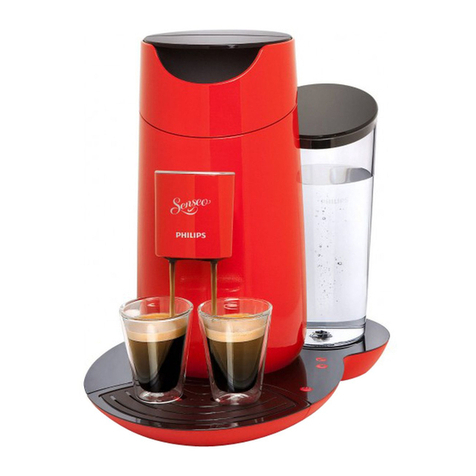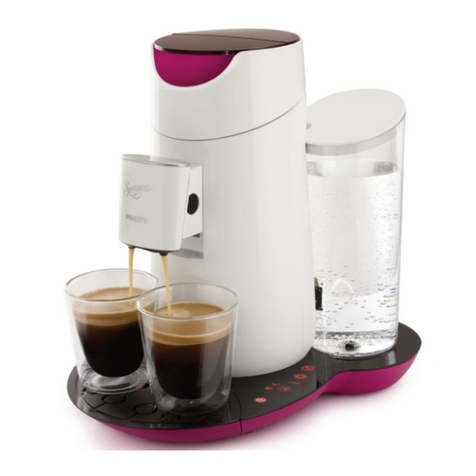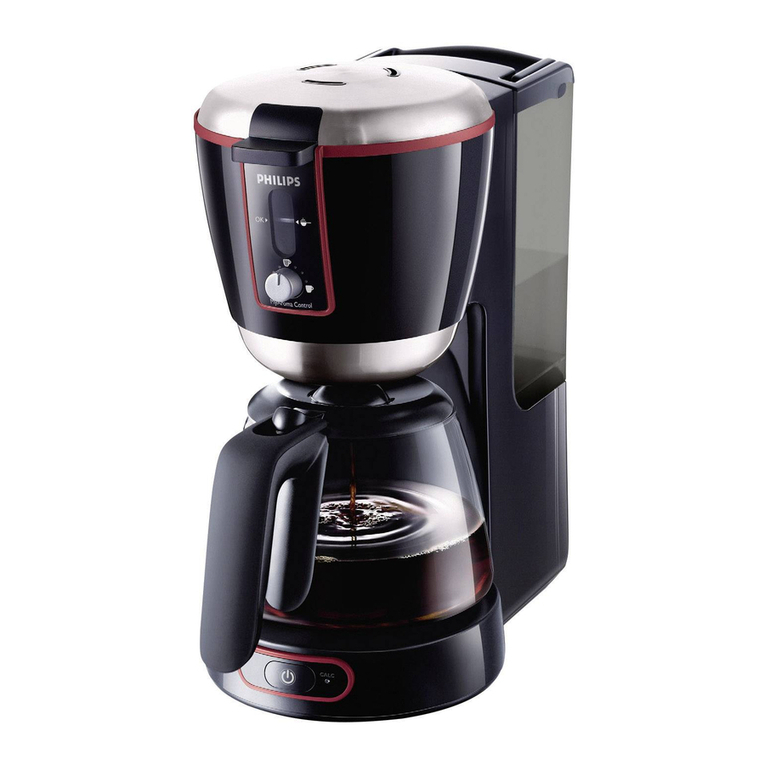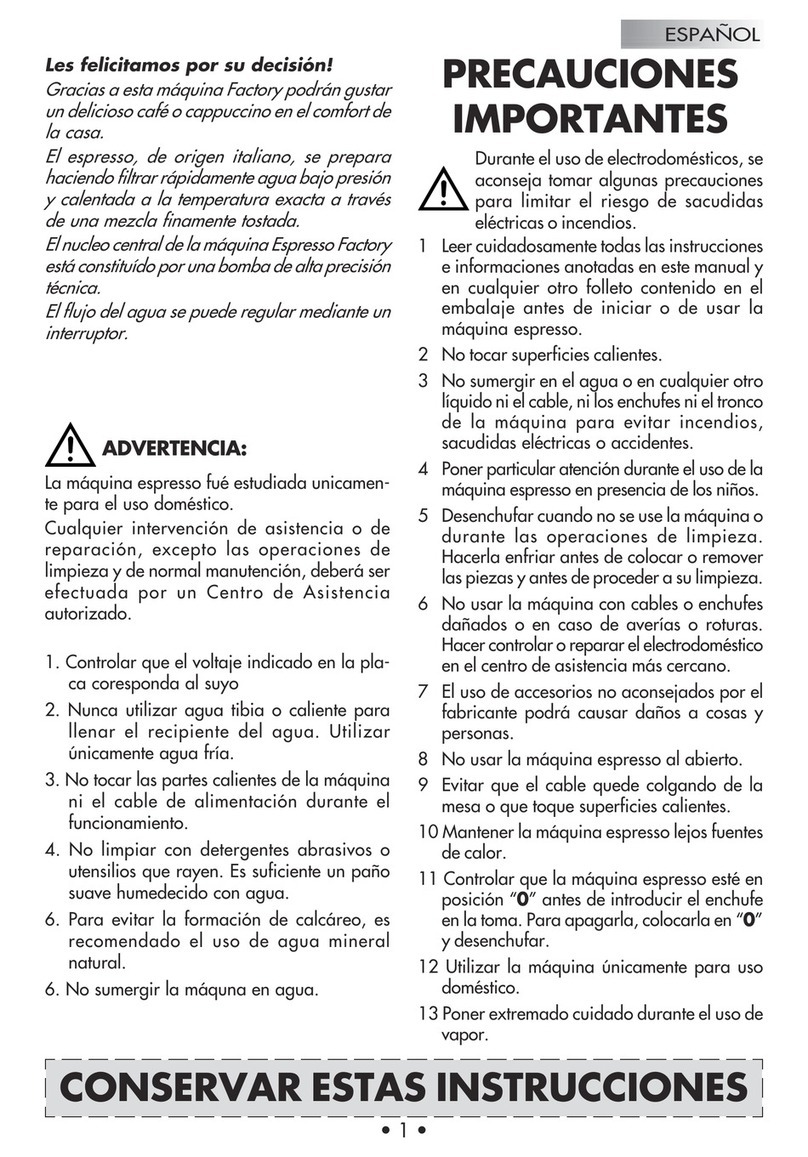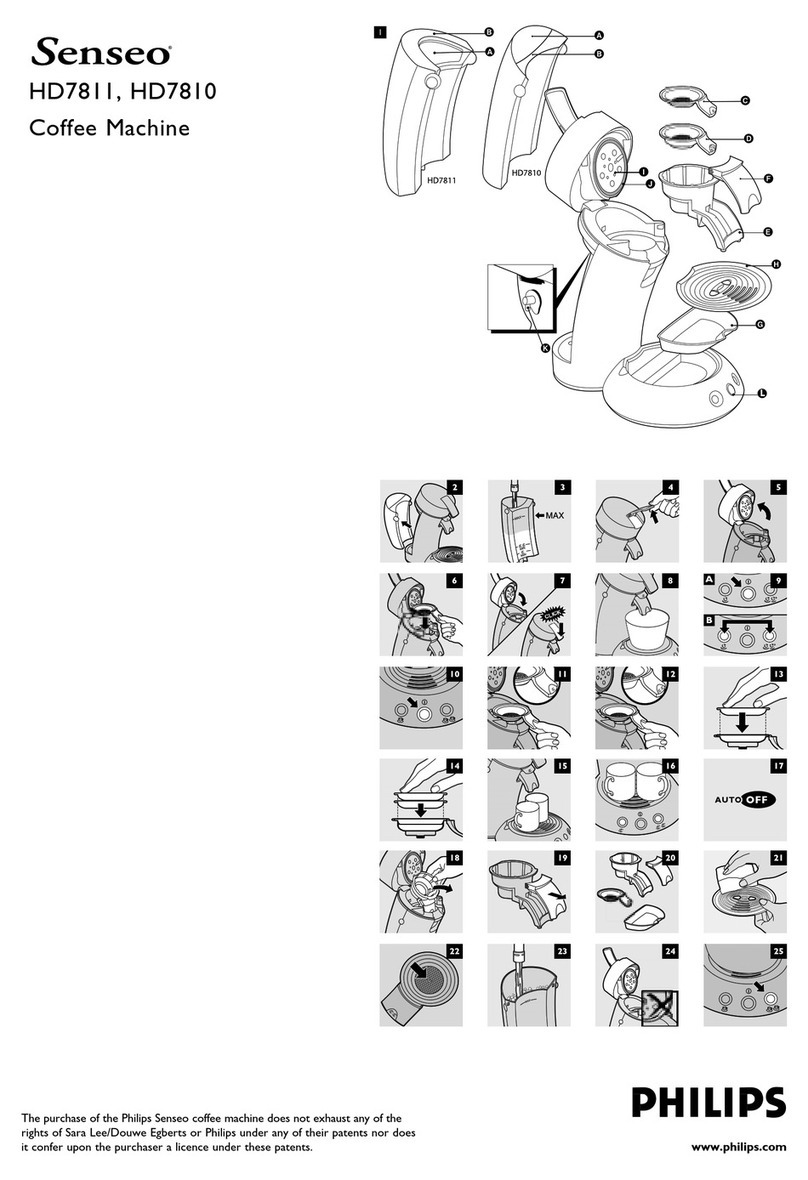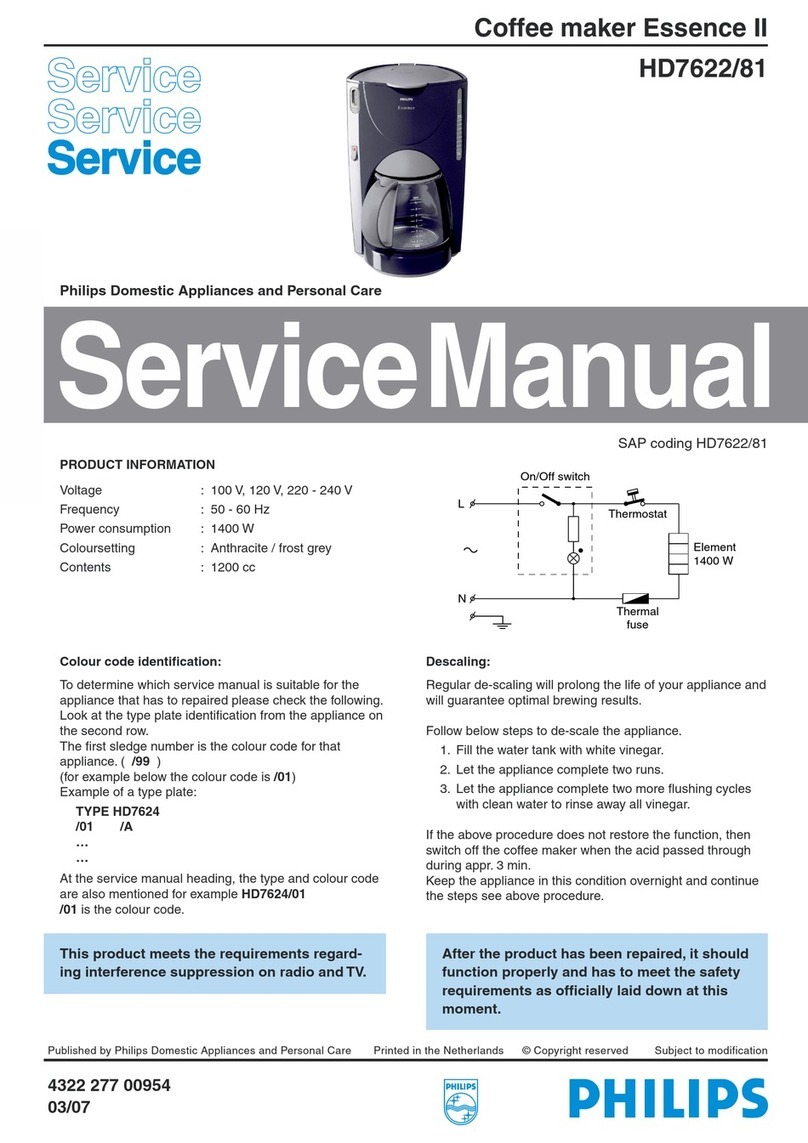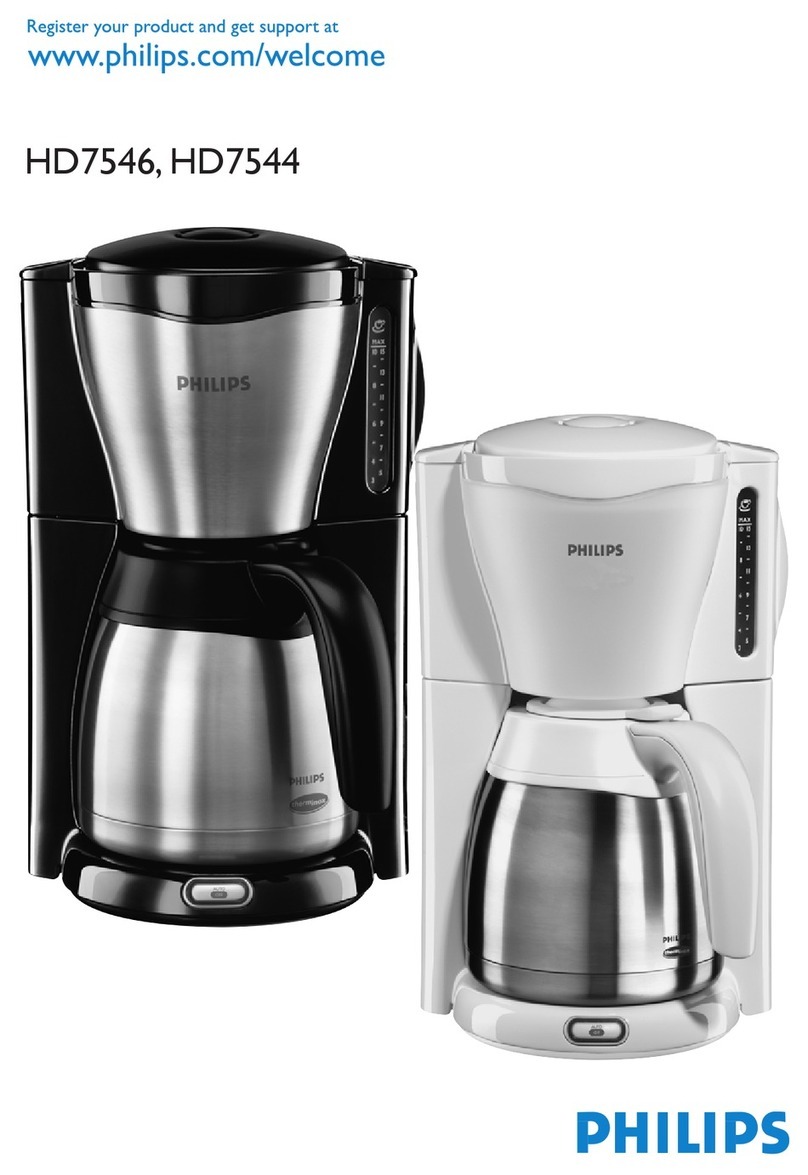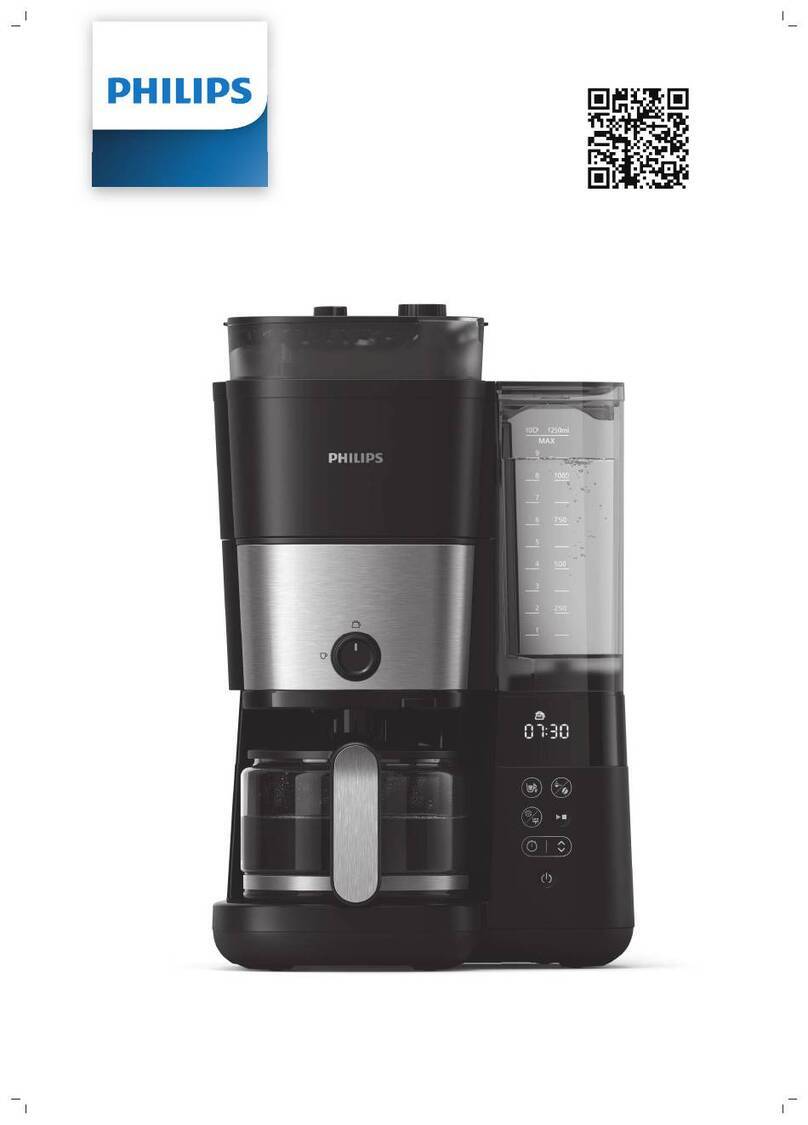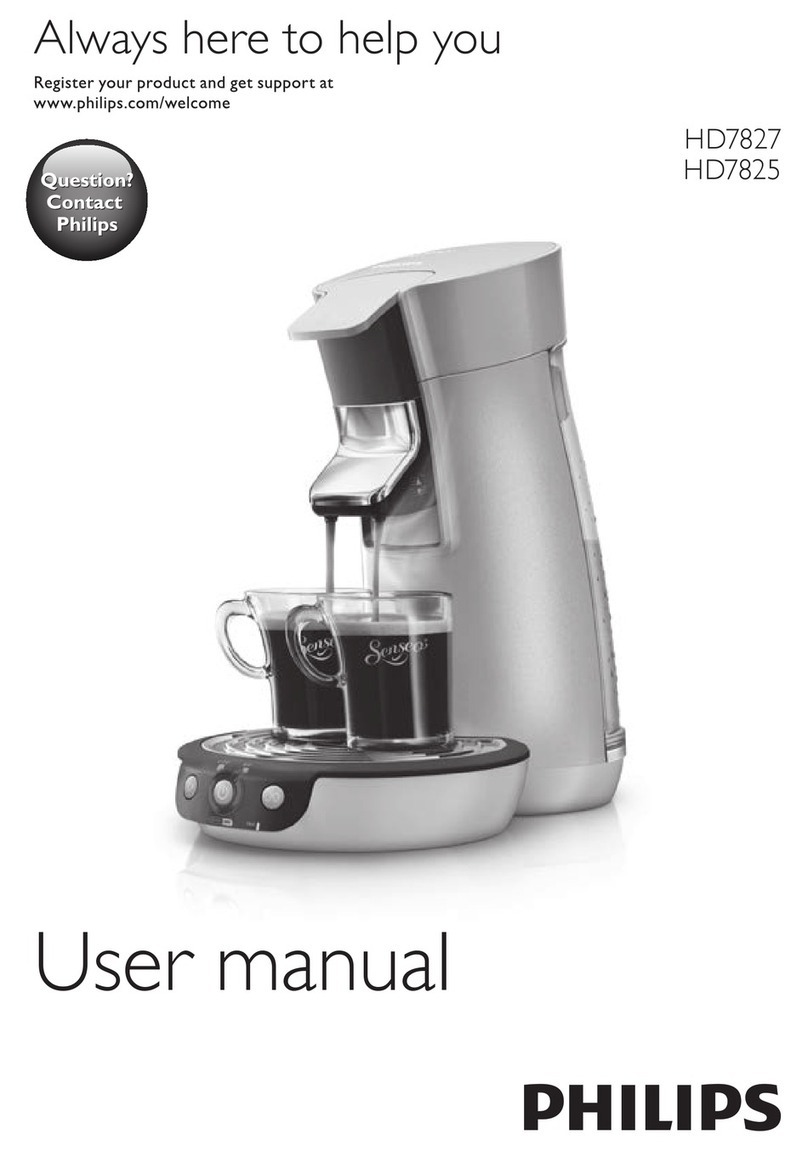
ENGLISH
Introduction
Congratulations on your purchase and welcome to Philips! To fully
benet from the support that Philips offers, register your product
at www.philips.com/welcome.
Important
Read this user manual carefully before you use the appliance and save it for
future reference.
Danger
- Never immerse the appliance in water or any other liquid, nor rinse it
under the tap.
Warning
- Check if the voltage indicated on the appliance corresponds to the local
mains voltage before you connect the appliance.
- Do not use the appliance if the plug, the mains cord or the appliance
itself is damaged.
- If the mains cord is damaged, you must have it replaced by Philips, a
service centre authorised by Philips or similarly qualied persons in
order to avoid a hazard.
- This appliance is not intended for use by persons (including children) with
reduced physical, sensory or mental capabilities, or lack of experience
and knowledge, unless they have been given supervision or instruction
concerning use of the appliance by a person responsible for their safety.
- Children should be supervised to ensure that they do not play with the
appliance.
- Keep the mains cord out of the reach of children. Do not let the
mains cord hang over the edge of the table or worktop on which the
appliance stands.
Caution
- Do not place the appliance on a hot surface and prevent the mains
cord from coming into contact with hot surfaces.
- Unplug the appliance if problems occur during brewing and before you
clean it.
- Never pour milk, coffee, hot water or carbonated water into the water
reservoir.
- This appliance is not intended to be used in household and similar
applications such as:
- staff kitchen areas in shops, ofces and other working environments;
- farm houses;
- by clients in hotels, motels and other residential type environments;
- bed and breakfast type environments.
Electromagnetic elds (EMF)
This Philips appliance complies with all standards regarding electromagnetic
elds (EMF). If handled properly and according to the instructions in this
user manual, the appliance is safe to use based on scientic evidence
available today.
General description (Fig. 1)
1 Filter holder
2 Coffee spout
3 Lid
4 Water tank
5 Removable cup tray
6 Drip tray
7 Mains plug
8 Cord storage facility
9 Power-on button
Not shown: permanent lter
Before first use
1 Placetheapplianceonaatandstablesurface.
2 Put the plug in the wall socket.
3 Windexcesscordclockwiseroundthecordstoragefacility(Fig.2).
Donotletthecordcomeintocontactwithhotsurfaces.
4 Cleanthedetachableparts(seechapter‘Cleaning’).
5 Reassembleallpartsandmakesurethatthelterholderisinthe
appliance(Fig.3).
Flushing the appliance
Note: Do not put a lter and ground coffee in the lter holder.
1 Fillthewatertankwithcoldfreshwaterandplacetwocupsonthe
cuptrayunderthecoffeespouts(Fig.4).
Note: Do not ll the water tank beyond the MAX indication.
2 Pressthepower-onbuttontoswitchontheappliance(Fig.5).
,Thepower-onlightgoesonandtheappliancestartsushing.
,Theapplianceswitchesoffautomaticallyafterbrewing.
3 Waituntilthepower-onlightgoesoutbeforeyouremovethecups.
4 Lettheappliancecooldownforatleast3minutesbeforeyoustartto
brewcoffee.
Using the appliance
1 Fillthecuporcupsyouaregoingtousewithfresh,coldwater.
2 Pourthewaterintothewatertank(Fig.4).
Note: Do not ll the water tank beyond the MAX indication.
3 Makesurethatthelterholderisintheappliance(Fig.3).
4 Putapaperlter(no.101)inthelterholder.(Fig.6)
Note: Some types come with a permanent lter. In this case you do not need
to use paper lters. You can also order the permanent lter separately (see
chapter ‘Ordering accessories’) (Fig. 7).
Note: Never use a permanent lter and a paper lter at the same time.
5 Putgroundcoffee(lter-negrind)inthelter(Fig.8).
- If you grind the coffee beans yourself, do not grind them too nely.
- Take approx. two level measuring spoons of ground coffee for each cup
when you use large cups.
- Take one level measuring spoon of ground coffee for each cup when
you use smaller cups.
- You can adapt the amount of coffee to your own taste.
6 Placethecuporcupsunderthecoffeespouts(Fig.9).
7 Pressthepower-onbuttontoswitchontheappliance(Fig.5).
,Thepower-onlightgoesonandtheappliancestartsbrewingcoffee.
Donotremovethecuporcupswhiletheapplianceisbrewing.
Note: During brewing, you can only switch off the appliance by removing the
mains plug from the wall socket. When you reinsert the plug into the wall
socket, the appliance continues brewing until the water reservoir is empty.
,Theapplianceswitchesoffautomaticallyafterbrewing.
8 Waituntilthepower-onlightgoesoutbeforeyouremovethecup
or cups.
Note: The appliance does not keep the coffee hot.
9 Ifyouhaveusedapaperlter,throwitaway(Fig.10).
10 Ifyouhaveusedthepermanentlter,emptyandrinseit(Fig.11).
Note: Let the appliance cool down for at least 4 minutes before you brew
coffee again.
Cleaning
Danger:Neverimmersetheapplianceinwateroranyotherliquid,nor
rinse it under the tap.
Neverusescouringpads,abrasivecleaningagentsoraggressiveliquids
such as petrol or acetone to clean the appliance.
1 Unplug the appliance.
2 Clean the appliance and the drip tray with a moist cloth.
3 Cleantheseparateparts(cuptray,lterholderandpermanentlter,
ifsupplied)inwarmwaterwithsomewashing-upliquidorcleanthem
in the dishwasher.
Descaling
Regular descaling prolongs the life of the appliance and guarantees optimal
brewing results for a long time.
In case of normal use, descale the appliance:
- 2 or 3 times a year if you use soft water (up to 18dH);
- 4 or 5 times a year if you use hard water (over 18dH).
Contact your local water board for information about the water hardness in
your area.
1 Fillthewatertankwithwhitevinegar(4%aceticacid).Donotputa
lterorgroundcoffeeinthelterholder.
2 Lettheappliancecompletetwobrewingcycles.
You can use the same vinegar for both brewing cycles.
3 Lettheappliancecompletetwomorebrewingcycleswithfresh,cold
watertoremoveanyvinegarandscaleresidues.
4 Cleantheseparateparts(seechapter‘Cleaning’).
